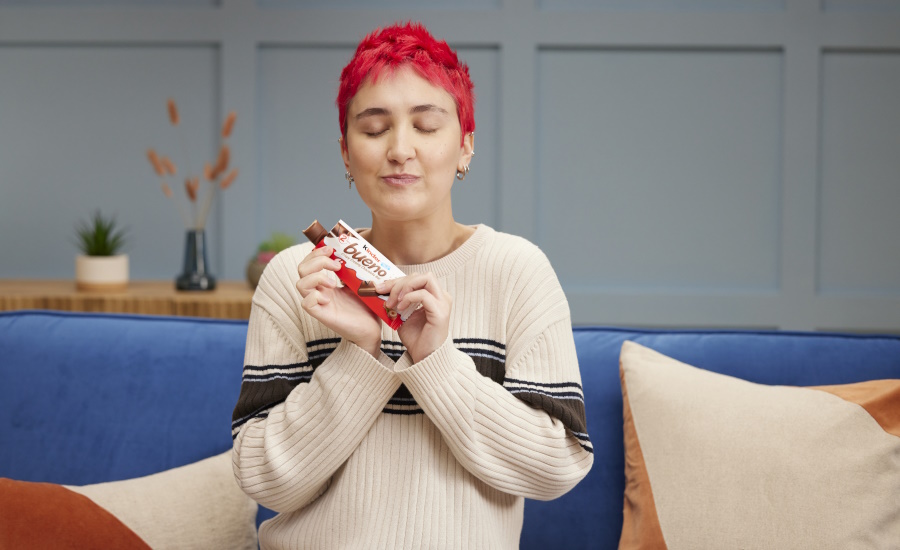If you watch a television show, see a movie, or ever leave your house, most likely you will see advertising everywhere.
Seeing advertising in any industry is inevitable—but what I find interesting is that some candy and snack companies don't run ads as often as you may think.
For example, for the Super Bowl this past February, Mars announced that it would be running an ad for its M&M's brand. It was M&M's 9th Super Bowl ad, dating back to 1998. The ad focused on inclusivity: "The spot will lean into the M&M'S purpose, to use the power of fun to include everyone," said the brand.
Oreo also ran a Super Bowl ad this year, and it was its first advertisement in over a decade. The ad focused on the cookie's "iconic role in pop culture," according to the brand. In 2013, Oreo aired a 30 second in-game spot, "Whisper Fight" and made advertising history when the brand reacted in real time, tweeting the phrase, "You can still dunk in the dark," after the lights went off in the stadium during that same game. I remember seeing the tweet at the time and thinking how clever it was.
Super Bowl ads are not cheap, so I can see why brands may not advertise every year, or even every other year (or every five years, for that matter).
Other ads have focused on marketing their products towards various age groups. Although I see a lot of brands focusing on Gen Z at the moment, Crunch bar recently launched an ad campaign entitled Turn Up the Fun, hoping to grab the attention of Millennials. For their ad, the Crunch brand leaned into humor, because they (very astutely, I might add) know that Millennials—my age group—love humor, and especially sharing memes (guilty as charged; my friends and I mostly communicate via sharing memes on Instagram or Facebook nowadays).
The brand said: "From research, we found that Millennials are very into humor, and many bond over their shared mundane experiences by sending memes to one another. Turn Up the Fun drives relatability around the fact that adulting is hard and can sometimes be plagued with responsibilities that seem boring, such as going through airport security. With Turn Up the Fun we hope to encourage Millennials to find fun in their daily routines."
 Still from new Kinder Bueno ad campaign
Still from new Kinder Bueno ad campaignAnother advertising theme I've noticed in the industry is feelings or sensations that consumers may experience when eating candy. In March, Kinder Bueno ran an ad campaign focusing on the "multi-sensorial experience" that consumers experienced when tasting the product.
"Through research, Kinder Bueno found that the crispy, creamy chocolate bar known for its taste experience created a multi-sensorial experience when consumers tasted the product that could be demonstrated in one word: 'wow.' The 'wow factor' of trying something new creates a pleasantly surprising connection between the consumer and the brand. With this campaign, Kinder Bueno aims to portray the feeling of 'wow,' bringing pleasure and surprise to consumers when they take a bite out of the crispy chocolate bar," said Kinder.
Another theme is partnering with a celebrity (or multiple celebrities) in order to bring attention to the product. For example, in February—unrelated to the Super Bowl—Haribo partnered with professional athletes Donald Driver and Marquez Valdes-Scantling to put their own spin on the brand's newest commercial.
"Known Haribo fans and wide-receivers for their respective teams, Driver and Valdes-Scantling lend their sweet personalities to a social media collaboration with the brand, doing their best imitations of the new commercial's kid-centric dialogue, which features two football players sitting on the sidelines touting their love of Haribo Goldbears. The new 'football' commercial joins Haribo's famous decade-long, global 'Kids' Voices' campaign, which has previously featured similar television spots set in a boardroom and library, where adults take on the authentic voices of adorable children enjoying Haribo treats," said the brand.
Finally, in January, Werther's Original launched its “Home Sweet Home” ad campaign, which was brand's first large-scale, global campaign in approximately five years.
This is another theme I've noticed, although not so much in 2023 or 2024: appealing to those who feel lonely (as a direct result of the pandemic, in my opinion). The brand said that the ad was a response to the fact that approximately half of U.S. adults report experiencing loneliness, according to the U.S. Surgeon General.
"Werther’s Original and 'Home Sweet Home' aim to celebrate emotional connections and comfort in the places where our earliest sweet memories occurred. The campaign celebrates connections and the idea that home is more than a place, it’s a feeling."
"A warmth and connection, a feeling of being loved. And just like home is more than a place, Werther’s is so much more than just sweet. It too is comfort and memories, connection and warmth. Werther’s Original helps us feel home sweet home, no matter where we are," said the brand.
Candy and confectionery companies may not run ads as often because candy is ubiquitous—and consumers don't need advertising to remind them that they enjoy eating sweet treats. Sometimes, however, they might just need a little nudge to get back to their favorite products, or perhaps to try a new (to them) brand.

